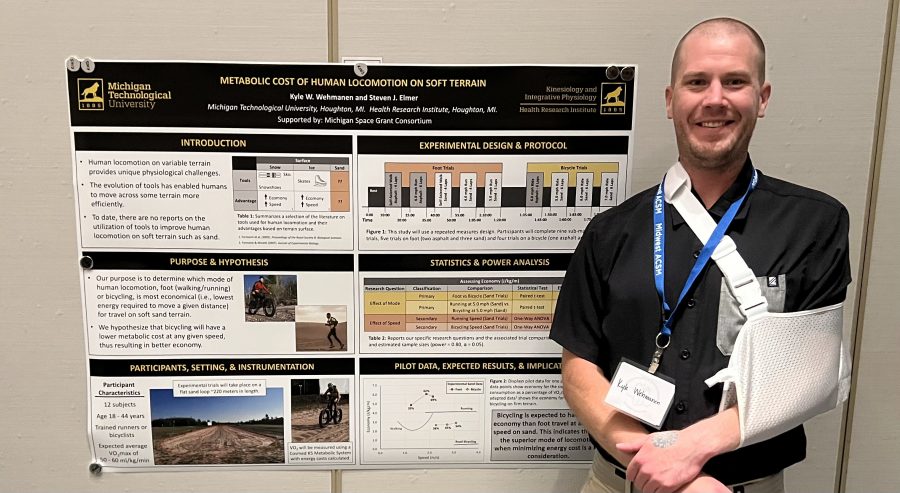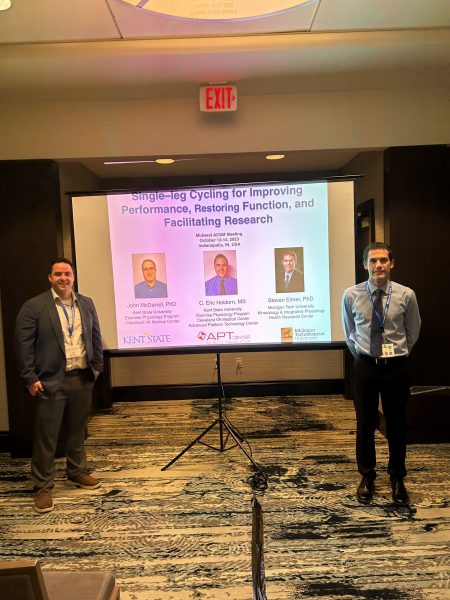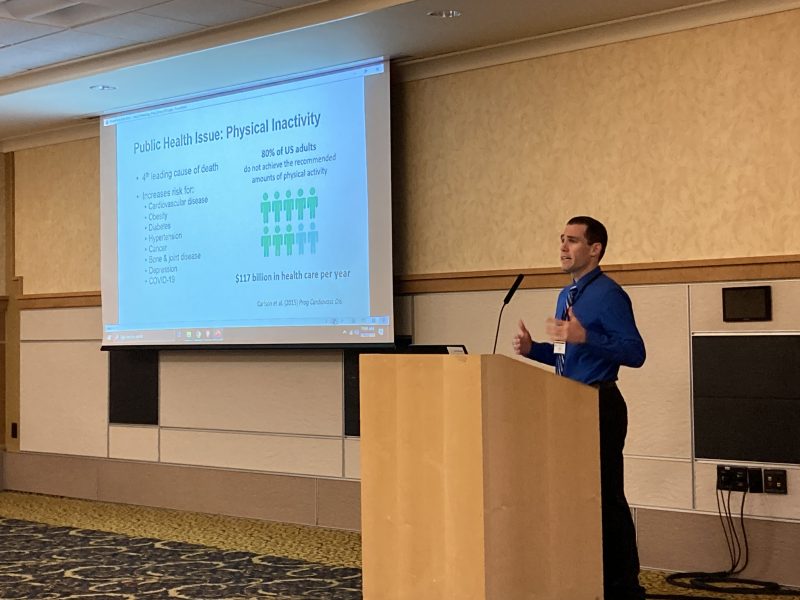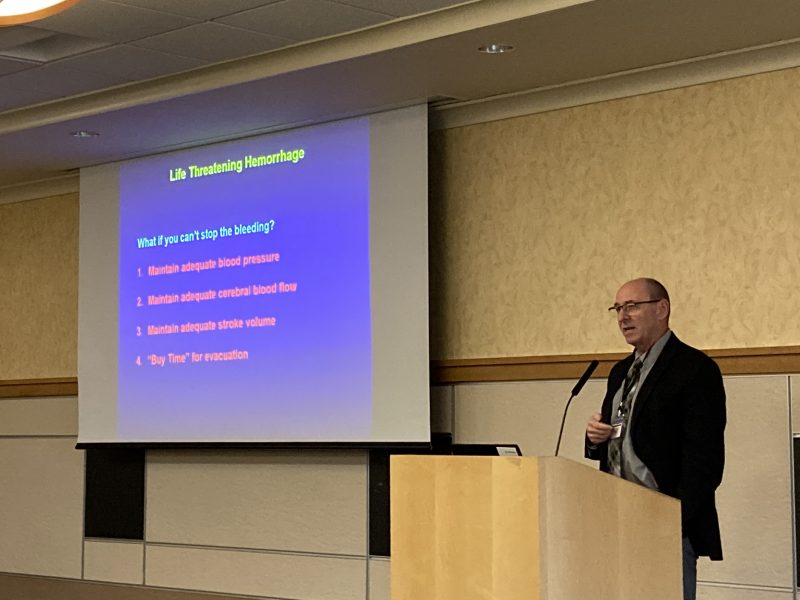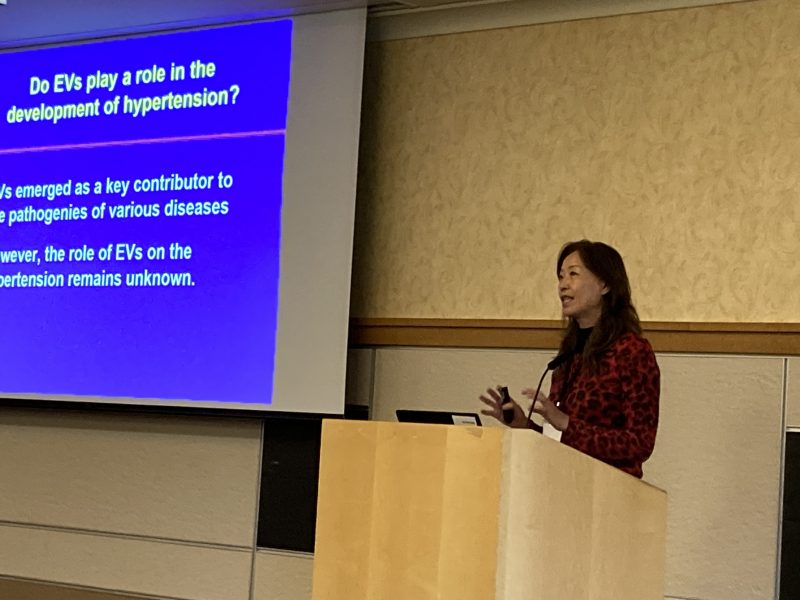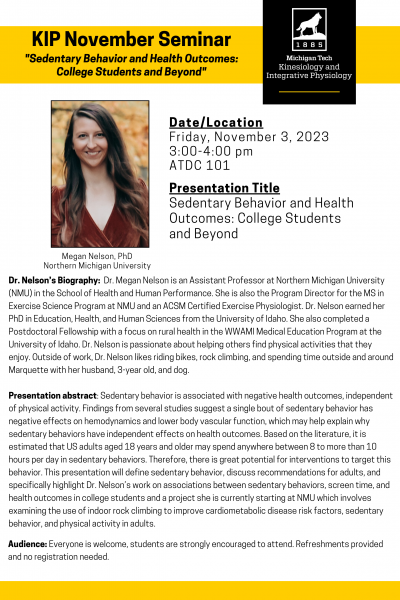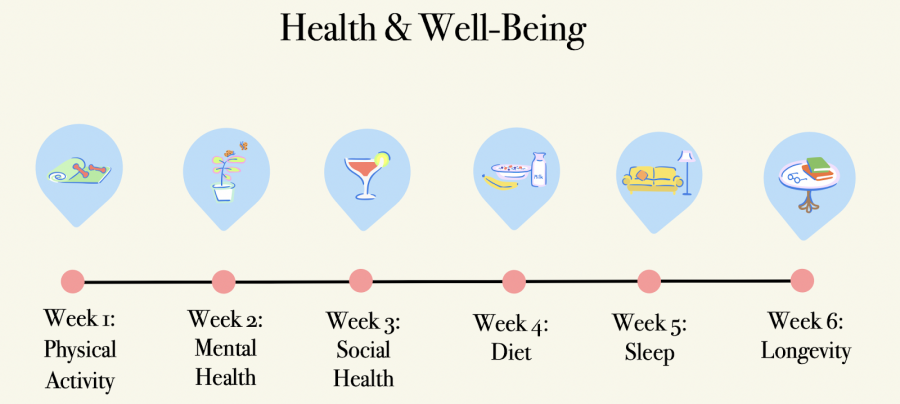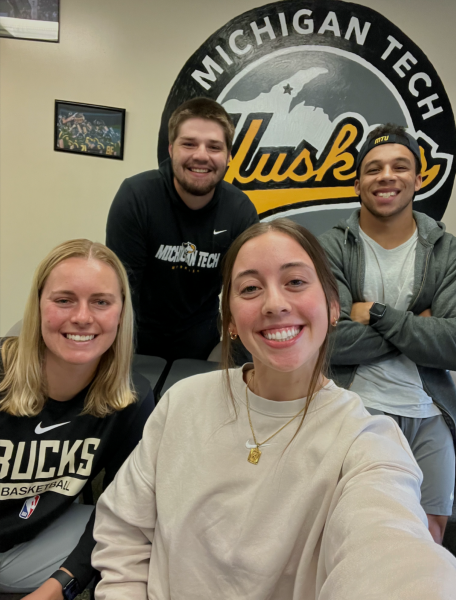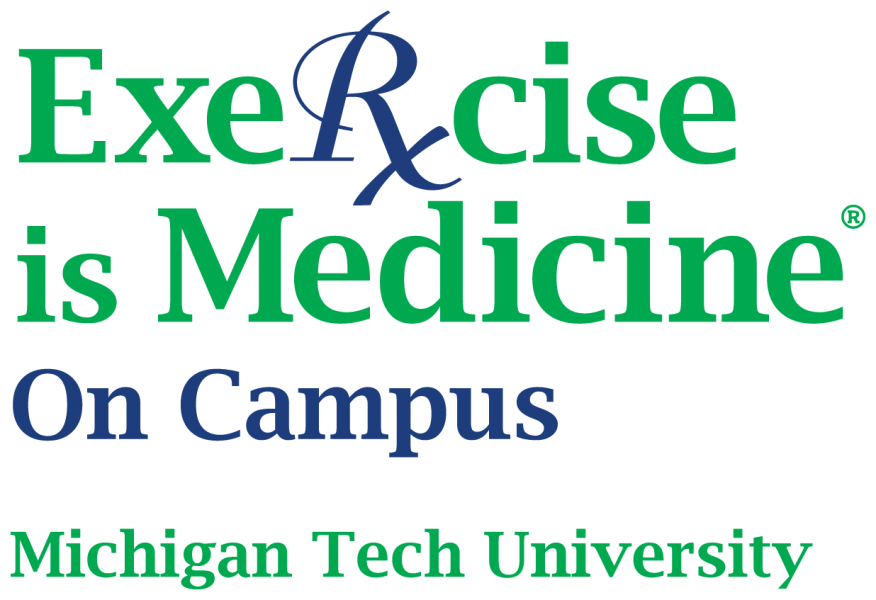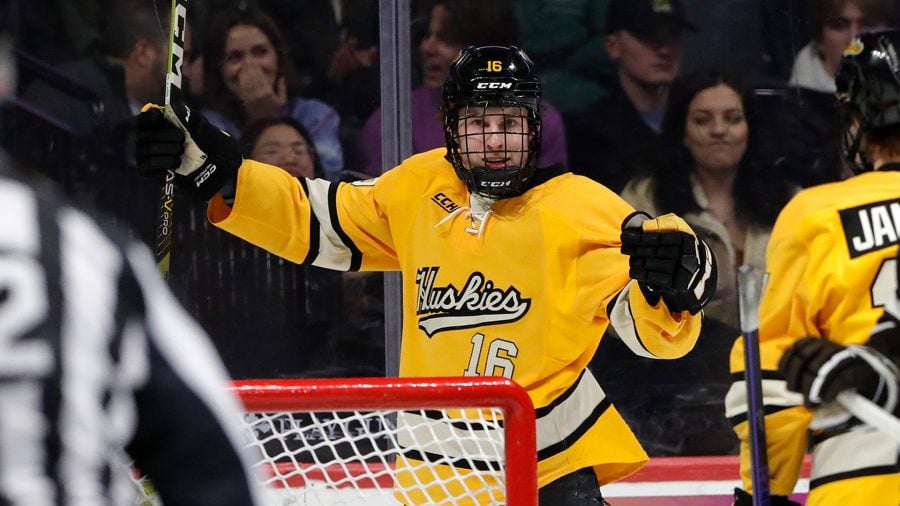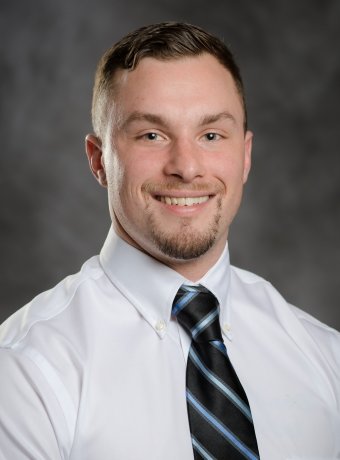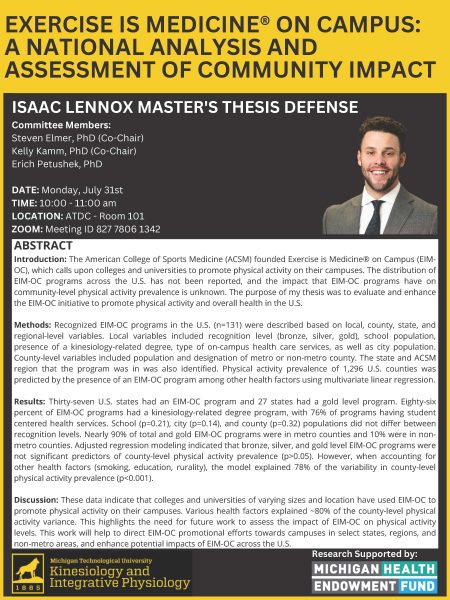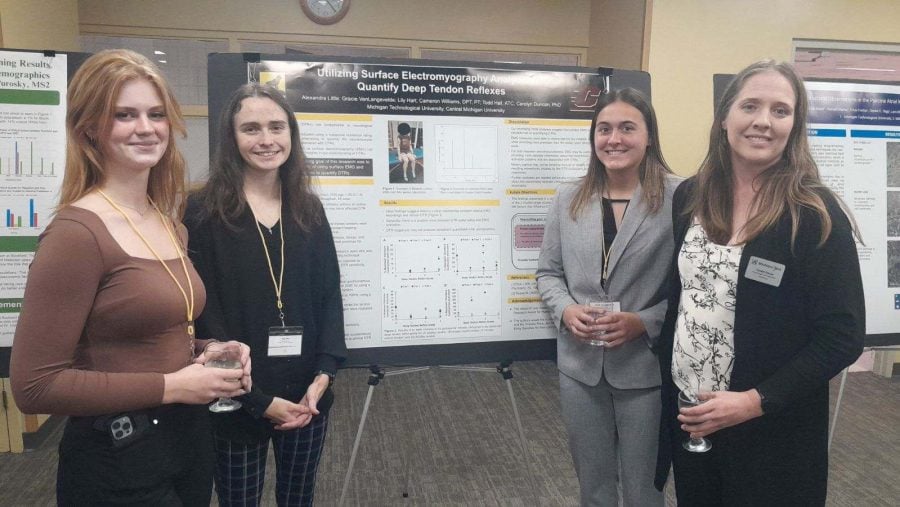
The research group that works in Dr. Carolyn Duncan’s Biomechanics Lab tied for 3rd place in the student poster competition. “My personal highlight of the conference was seeing the students interact with the healthcare professionals. The networking experience was awesome, and they seemed so excited that the work they were doing was of interest to people in the profession,” remarked Dr. Duncan. Learn more about the students’ research and work in the abstract below.
Utilizing Surface Electromyography and Kinematic Analyses to Quantify Deep Tendon Reflexes
Alexandra Little (BioSci), Gracie VanLangevelde (KIP), Lily Hart (KIP), Cameron Williams (CMU), Todd Hall (KIP), Carolyn Duncan (KIP)
Michigan Technological University, Central Michigan University
Deep tendon reflexes (DTRs) are a fundamental part of neurological examinations. Clinical observations and past studies have suggested that abnormal DTRs are a sign of corticospinal tract abnormalities or dysfunction with other descending pathways that influence the reflex arc. However, there are challenges regarding the interpretation and understanding of reflex excitability in clinical settings. There have been some attempts at using alternative methods, such as electromyography, to mechanically quantify DTRs for interpretation. However, this research has been limited to smaller focused studies and has not been used to examine and characterize DTRs across larger populations.
The overarching goal of the research is to characterize and quantify DTR responses using surface EMG and kinematic analyses. To accomplish this, our research team is currently performing 2 studies that aim to 1) Quantifying and determining the repeatability of DTR in healthy varsity athletes 2) Evaluating the relationship between neuromuscular output and DTR rating and 3) Examining the influence of concussions and contact sports on DTR response. In all studies surface EMG electrodes and inertial measurement units (IMU) are utilized to help quantify responses during standard quadriceps, achilles, biceps and triceps DTR testing. While this research is currently ongoing, initial findings suggest that surface electromyography and kinematic analyses can provide more precise information about DTR responses. Moving forward, these initial findings provide the foundational basis for future research examining DTR responses. This research also demonstrates the potential for utilizing EMG and kinematic analyses in clinical settings to gain more information about DTR responses.
